Related Research Articles
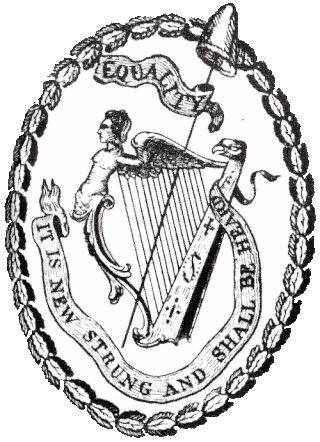
The Society of United Irishmen was a sworn association in the Kingdom of Ireland formed in the wake of the French Revolution to secure "an equal representation of all the people" in a national government. Despairing of constitutional reform, in 1798 the United Irishmen instigated a republican insurrection in defiance of British Crown forces and of Irish sectarian division. Their suppression was a prelude to the abolition of the Protestant Ascendancy Parliament in Dublin and to Ireland's incorporation in a United Kingdom with Great Britain. An attempt to revive the movement and renew the insurrection following the Acts of Union was defeated in 1803.

Henry Joy McCracken was an Irish republican, a leading member of the Society of the United Irishmen and a commander of their forces in the field in the Rebellion of 1798. In pursuit of an independent and democratic Irish republic, he sought to ally the disaffected Presbyterians organised in the Society with the Catholic Defenders, and in 1798 to lead their combined forces in Antrim against the British Crown. Following the defeat and dispersal of the rebels under his command, McCracken was court-martialled and executed in Belfast.

Milltown Cemetery is a large cemetery in west Belfast, Northern Ireland. It lies within the townland of Ballymurphy, between Falls Road and the M1 motorway.
The Battle of Antrim was fought on 7 June 1798, in County Antrim, Ireland during the Irish Rebellion of 1798 between British troops and Irish insurgents led by Henry Joy McCracken. The British won the battle, beating off a rebel attack on Antrim town following the arrival of reinforcements but the county governor, John O'Neill, 1st Viscount O'Neill, was fatally wounded.
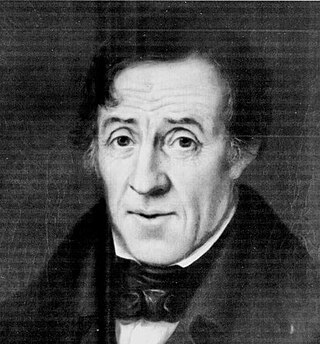
James "Jemmy" Hope was a radical democrat in Ireland who organised among tenant farmers, tradesmen and labourers for the Society of the United Irishmen. In the Rebellion of 1798 he fought alongside Henry Joy McCracken at the Battle of Antrim. In 1803 he attempted to renew the insurrection against the British Crown in an uprising co-ordinated by Robert Emmett and the new republican directorate in Dublin. Among United Irishmen, Hope was distinguished by his conviction that "the fundamental question at issue between the rulers and the people" was "the condition of the labouring class".
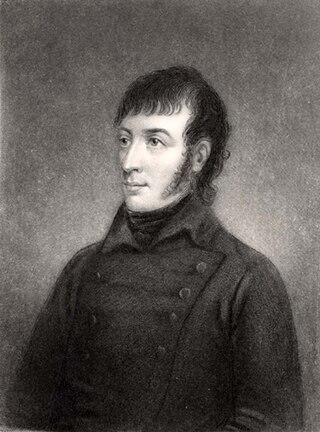
Thomas Paliser Russell was founding member, and leading organiser, of the United Irishmen marked by his radical-democratic and millenarian convictions. A member of the movement's northern executive in Belfast, and a key figure in promoting a republican alliance with the agrarian Catholic Defenders, he was arrested in advance of the risings of 1798 and held until 1802. He was executed in 1803, following Robert Emmet's aborted rising in Dublin for which he had tried, but failed, to raise support among United and Defender veterans in the north.

Belfast City Cemetery is a large cemetery in west Belfast, Northern Ireland. It lies within the townland of Ballymurphy, between Falls Road and Springfield Road, near Milltown Cemetery. It is maintained by Belfast City Council. Vandalism in the cemetery is widespread.

Mary Ann McCracken was a social activist and campaigner in Belfast, Ireland, whose extensive correspondence is cited as an important chronicle of her times. Born to a prominent liberal Presbyterian family, she combined entrepreneurship in Belfast's growing textile industry with support for the democratic programme of the United Irishmen; advocacy for women; the organising of relief and education for the poor; and, in a town that was heavily engaged in trans-Atlantic trade, a lifelong commitment to the abolition of slavery. In 2021, Belfast City Council agreed to erect a statue of Mary Ann McCracken in the grounds of Belfast City Hall.
Oliver Bond was an Irish merchant and a member of the Leinster directorate of the Society of United Irishmen. He died in prison following the Irish Rebellion of 1798.

Elizabeth "Betsy" Gray, is a folkloric figure in the annals of 1798 Rebellion in Ireland. Ballads, poems and popular histories celebrate her presence in the ranks of the United Irishmen, and her death, on 12 June 1798 at the Battle of Ballynahinch. Contemporary records are unable to confirm the tale that has been told in all its detail, but they do point to the role of women in supporting the insurrection, including as combatants in the field. Contesting ownership of her memory, in 1898 local unionists disrupted Irish nationalist centenary commemorations and destroyed her grave marker.
Smithfield and Union is one of the Belfast quarters established by Belfast City Council in the 21st century. Initially designated the Smithfield Market and Library quarter, the current name was adopted in 2011. Based around the north of Belfast City Centre it extends from North Street to Frederick Street and is bounded by Royal Avenue/York Street and Carrick Hill/Millfield. It houses Belfast Central Library and two of the main daily newspapers The Irish News and The Belfast Telegraph.

Kellys Cellars is a pub in Belfast, Northern Ireland, situated at 30 Bank Street in the city centre. Built on March 14, 1720, it is one of the oldest pubs of Belfast.

The Ulster History Circle is a heritage organisation that administers Blue Plaques for the area that encompasses the province of Ulster on the island of Ireland. It is a voluntary, not-for-profit organisation, placing commemorative plaques in public places in honour of people and locations that have contributed to all genres of history within the boundary of the Irish province of Ulster, or contemporary country of Northern Ireland. Founded in the early 1980s, the group receives no government funding, unlike many similar organisations in the United Kingdom.

The Belfast Charitable Society, founded in 1752, is Belfast's oldest charitable organisation. It continues its philanthropic work from Clifton House which the Society opened, originally as the town's poor house and infirmary, in 1774.
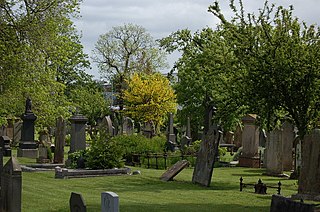
Balmoral Cemetery is a cemetery in the Malone area of South Belfast, Northern Ireland, opened in 1855.

Karori Cemetery is New Zealand's second largest cemetery, located in the Wellington suburb of Karori.
Thomas McCabe, a prominent merchant in Belfast, was an abolitionist credited with defeating a proposal to commission ships in the town for the Middle Passage, and, with his son William Putnam McCabe, was an active member of the Society of the United Irishmen.
James Dickey was a young barrister from a Presbyterian family in Crumlin in the north of Ireland who was active in the Society of the United Irishmen and was hanged with Henry Joy McCracken for leading rebels at the Battle of Antrim.
William Tennant (1759–1832), often spelled William Tennent, was an Ulster Presbyterian banker and a leading member in Belfast of the Society of the United Irishmen who, in 1798, sought by insurrection to secure a representative and independent government for Ireland. After a period of imprisonment he returned to the commercial and civic of Belfast, in 1810 helping to found what is today the Royal Belfast Academical Institution.
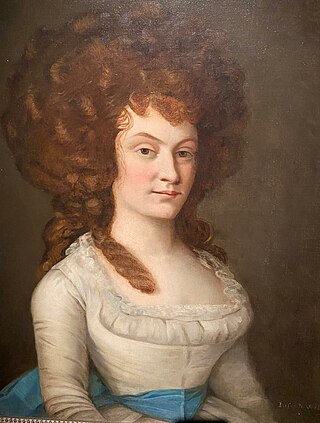
Cherry Crawford Hyndman (1768-1845) was the mistress of a liberal political household in Belfast, Ireland, and reputedly in the 1790s an active member of the republican Society of United Irishmen.
